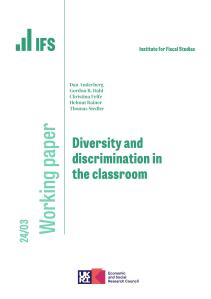Authors

Research Fellow University College London
Pedro is a Professor of Economics at University College London and an economist in the IFS' Centre for Microdata Methods and Practice (cemmap).

Research Associate University of Chicago
James is a Research Associate of the IFS and the Henry Schultz Distinguished Service Professor of Economics at the University of Chicago.

Karsten Hansen
Suggested citation
P, Carneiro and K, Hansen and J, Heckman. (2003). 'Estimating distributions of counterfactuals with an application to the returns to schooling and measurement of the effect of uncertainty on schooling choice' (2003)
More from IFS
Understand this issue

Sure Start achieved its aims, then we threw it away
15 April 2024

Scottish Budget 2024-25: IFS analysis

A mess has been made of Child Benefit, and the clear-up operation may not be easy
29 March 2024
Policy analysis

The short- and medium-term impacts of Sure Start on educational outcomes
9 April 2024

Sure Start greatly improved disadvantaged children’s GCSE results
9 April 2024

What you need to know about the new childcare entitlements
28 March 2024
Academic research

Parental beliefs, perceived health risks, and time investment in children
15 April 2024

Higher Education Access and Funding: challenges and policy options

Diversity and discrimination in the classroom
12 February 2024